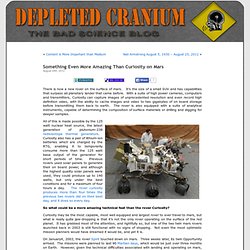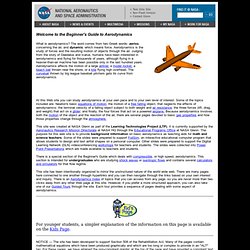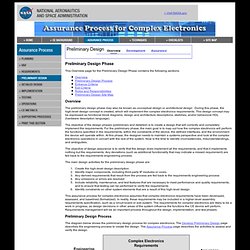

The rover's energy. Mars Rover Set to "Drive, Drive, Drive"—Headed for "Prize" Mountain. With its extensive robotic-arm tests set to conclude Thursday, the Mars Science Laboratory rover—aka Curiosity—is ready to "drive, drive, drive," mission manager Jennifer Trosper of NASA's Jet Propulsion Laboratory (JPL) said in a press conference Wednesday. The initial goal? "To find the right rock to begin doing contact science with the arm. " Once there, the rover can call on the most sophisticated suite of tools ever sent to an alien planet, including an x-ray spectrometer to identify elements in rocks, a supersharp close-up camera, and a lab-in-a-box that chemically analyzes samples dropped in by the arm. The ultimate goal is to uncover—or rule out—the evidence of past or present organic compounds and other substances seen as building blocks of life as we know it.
Curiosity's likely next stop is a site called Glenelg, chosen in part because it features three types of rock. Scientists want to understand how towering Mount Sharp came to be in the middle of a crater. Is Curiosity a He? Something Even More Amazing Than Curiosity on Mars. There is now a new rover on the surface of mars.

It’s the size of a small SUV and has capabilities that surpass all planetary lander that came before. With a suite of high power cameras, computers and transmitters, Curiosity can capture images of unprecedented resolution and even record high definition video, with the ability to cache images and video to two gigabytes of on board storage before transmitting them back to earth. The rover is also equipped with a suite of analytical instruments, capable of determining the composition of surface materials or drilling and digging for deeper samples. All of this is made possible by the 125 watt nuclear heat source, the latest generation of plutonium-238 radioisotope thermal generators. Remote Sensing Tutorial Page 13-4. Measurements with radiometers and spectrometers are carried out primarily to accumulate specific spectral signatures of various materials and features that help to build up a spectral data "bank".

This can be done under controlled laboratory conditions, leading to "representative" signatures for the particular material. Signatures gathered in the field, from portable instruments on tripods or mounted on "cherry pickers", will include more natural conditions, such as atmospheric effects and solar illumination. File:MSL-spacecraft-exploded-view.png. Challenges of Getting to Mars: Curiosity’s Seven... Video description.

Nuclear generator powers Curiosity Mars mission. When the Curiosity rover touched down on Mars yesterday, a specially designed nuclear generator kicked into action.

Previous Mars missions have relied on solar panels to power the rovers, but exploration was slowed down by dust build-up on the solar panels or short winters days with little sunlight. The Curiosity Rover, which is as big as a large car, is also significantly larger and ten times heavier than previous Martian rovers. Enter the Multi-Mission Radioisotope Thermoelectric Generator, or MMRTP, an energy source that relies on the heat generated by decaying plutonium dioxide to run Curiosity. It’s designed to run at least one Martian year, which is almost two Earth years. The Curiosity is essentially a robotic science lab, equipped with sophisticated instruments for taking ground samples and analyzing their chemical make-up in the search for signs of life.
Nuclear power has been used in 26 previous space missions over the past 50 years. NASA's Mars rover Curiosity Lands On Mars - Key Facts. NASA’s Mars science rover Curiosity landed safely on the Red Planet Mars. Mars Science Laboratory (MSL) is a robotic space probe mission to Mars launched by NASA on November 26, 2011, which successfully landed Curiosity, a Mars rover, in Gale Crater on August 6, 2012 at 05:14:39 UTC.
After years of hard work and seven minutes of terror, workers at NASA’s Jet Propulsion Laboratory let out their tears of joy. It took more than 8 months for the Curiosity to make the journey from Earth to Mars. The robotic lab sailed through space for more than eight months, covering 352 million miles (566 million km), before piercing Mars’s atmosphere at 13,000 miles (20,921 km) per hour — 17 times the speed of sound — before starting its descent. The USD 2.5 billion spacecraft is the largest and most advanced ever sent to another planet. Specifications Spacecraft. Mars Exploration Rover Mission: The Mission. Lesson13_68_LessonPlan_short.docx.
Lesson11_68_LessonPlan_short.docx. Lesson5_68_LessonPlan_short. Lifting SAM Instrument for Installation into Mars Rover. Lifting SAM Instrument for Installation into Mars Rover The Sample Analysis at Mars (SAM) instrument, largest of the 10 science instruments for NASA's Mars Science Laboratory mission, will examine samples of Martian rocks, soil and atmosphere for information about chemicals that are important to life and other chemical indicators about past and present environments.

NASA's Goddard Space Flight Center, Greenbelt, Md., built SAM. The 40-kilogram (88-pound) instrument includes three laboratory tools for analyzing chemistry, plus mechanisms for handling and processing samples. In this photograph, technicians and engineers inside a clean room at NASA's Jet Propulsion Laboratory, Pasadena, Calif., prepare to install SAM into the mission's Mars rover, Curiosity. The photograph was taken on Jan. 6, 2011. Beginner's Guide to Aerodynamics. At this Web site you can study aerodynamics at your own pace and to your own level of interest.

Some of the topics included are: Newton's basic equations of motion; the motion of a free falling object, that neglects the effects of aerodynamics; the terminal velocity of a falling object subject to both weight and air resistance; the three forces (lift, drag, and weight) that act on a glider; and finally, the four forces that act on a powered airplane. Because aerodynamics involves both the motion of the object and the reaction of the air, there are several pages devoted to basic gas properties and how those properties change through the atmosphere. This site was created at NASA Glenn as part of the Learning Technologies Project (LTP). It is currently supported by the Aeronautics Research Mission Directorate at NASA HQ through the Educational Programs Office at NASA Glenn. There is a special section of the Beginner's Guide which deals with compressible, or high speed, aerodynamics.
Preliminary Design Overview. This Overview page for the Preliminary Design Phase contains the following sections: Overview The preliminary design phase may also be known as conceptual design or architectural design .

During this phase, the high-level design concept is created, which will implement the complex electronics requirements. This design concept may be expressed as functional block diagrams, design and architecture descriptions, sketches, and/or behavioral HDL (hardware description language). Lesson9_68_LessonPlan_short.docx. Rover_Communication_handout.docx. Landing a Space Probe or Rover. 1.

Watch the NASA video “Intro to Engineering.” Show students the NASA video. As you hear each step described in the video, write it on the board: Question—identify the question you are trying to answerIdeas—brainstorm ideas to solve the problem; pick the one that makes the most senseDraw plan—sketch out a planBuild—build the modelTest —test multiple times, improving on the original idea between each test Explain to students that they will follow these same steps that scientists and engineers use as they design and create a vehicle that can safely land a probe or rover on a planet. 2. 3. 4. NASA_Engineers_Design_article. Mars Mobile. Mars Rover: Lesson Plans. Mars Mobile. HotAirBalloonDirections. Educators 5-8.
Return to Mars: 2012 Rover Curiosity—Live Video. Share these videos on your Facebook page.

How: Copy the code above using CTRL-C or COMMAND-C and paste it into your site. What's Going On: The embed code will place a player with our featured Return To Mars videos, including live webcasts, on your site. Note: The featured videos will play on iPads and other mobile devices, however, visitors to your site must have a Flash-enabled browser in order to view the live webcasts. Company: Space Fence.